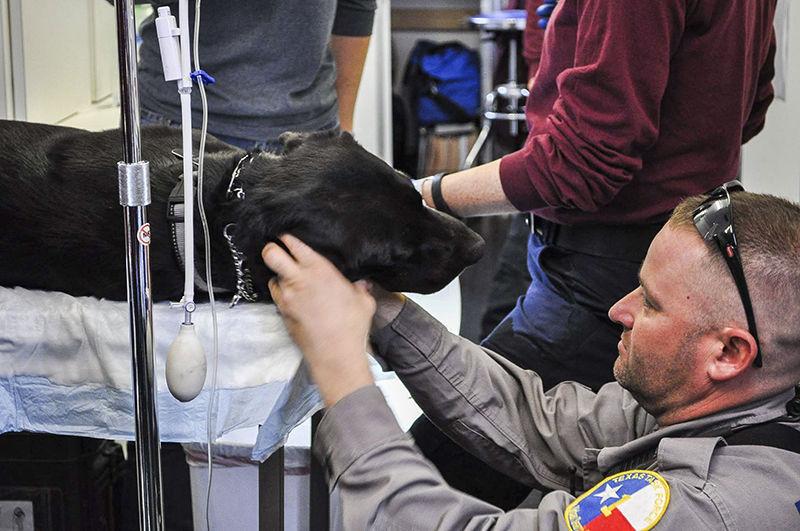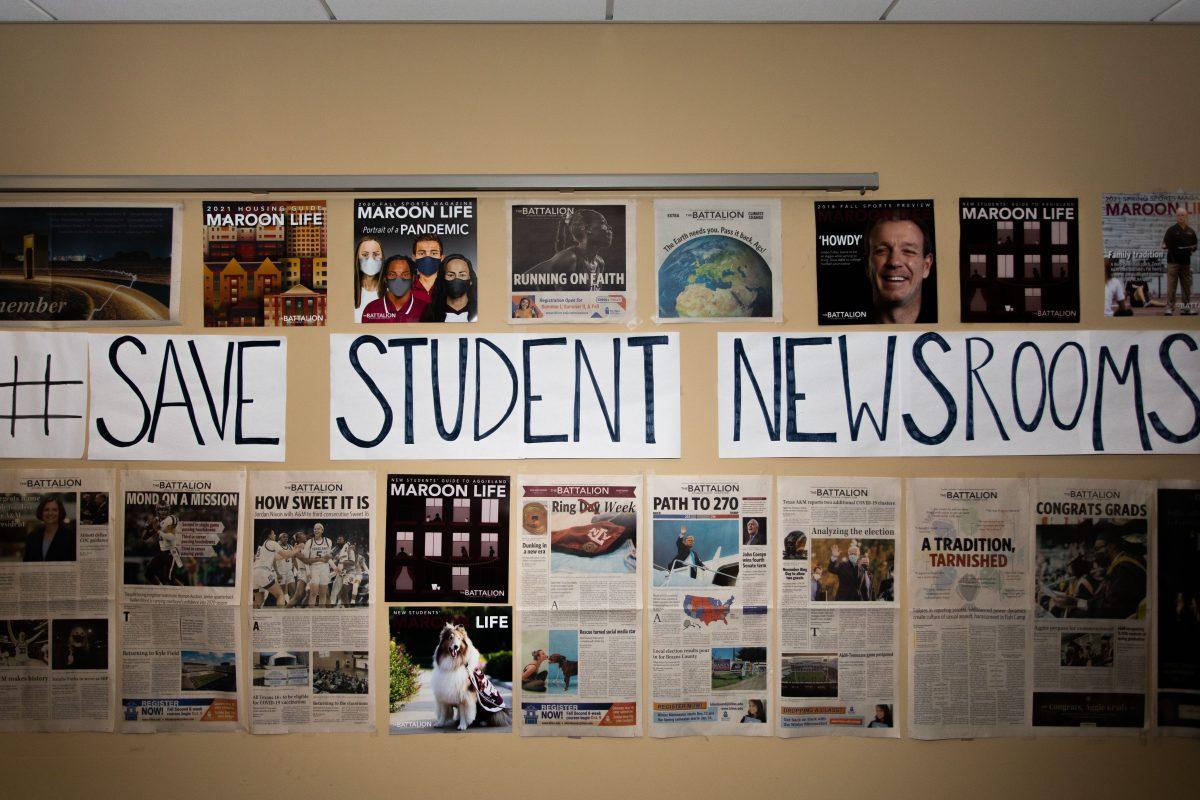The Texas A&M Veterinary Emergency Team, or VET, made entirely of students and resident veterinarians at the A&M College of Veterinary Medicine, stepped up in recent weeks to protect and save pets lost in the flooding of a large portion of Texas.
VET Communications Manager Angela Clendenin said the team began as a partner to Texas Task Force 1 (TX-TF1), the urban rescue response team that is a branch of the Texas Engineering Extension Service, taking care of the group’s search and rescue dogs.
“Just like the humans they work with, the dogs are very prone to injury,” Clendenin said. “We’re able to look them over each morning, before they go out, and then provide more evaluations over the course of the day. Task force members have said that having that sort of veterinary intervention has doubled the amount of time [the dogs] are able to remain in service before being rotated out to go home.”
Clendenin said a true need for animal rescue was recognized in the wake of disasters such as Hurricanes Katrina, Rita and Ike in the mid to late-2000s.
“We saw that animal issues were becoming a serious problem,” Clendenin said. “Hurricane Katrina led to the passing of the Pets Evacuation Transportation and Standards (PETS) Act. What they were realizing was that pets were becoming such an important aspect in people’s lives that they wouldn’t leave them behind to evacuate.”
While on site with TX-TF1, Clendenin said the group is able to assist with domestic animal rescues and care as well.
“A lot of times when people do evacuate, they end up losing their pets,” Clendenin said. “That leaves cats and dogs alone in a very hazardous environment. Animal control officials are able to request our assistance, and as they find animals we are able to care for them.”
Vet school students like Evan Scott rotate between time in the on-campus hospitals and in the field with VET. Scott said after traveling to Wimberley in response to the flooding, he left with a new perspective on how impactful his career choice could be.
“It was really eye-opening to see how people were personally affected by the disasters, and how fast a person’s life can change,” Scott said. “[Their animals] might be the only thing that a person has left, so it’s a powerful feeling to know that we’re there to help animals, but we’re really helping the people.”
Scott said his experiences with VET affected how he looks at disaster planning, even for his own future business.
“It makes you think about the unthinkable, and what you would do in that situation,” Scott said. “You have to know the plan and not be figuring that out on the fly, adding to the chaos.”
Jessica Ragauskas, a first year veterinary student at the University of Florida who decided to do summer work at the A&M Vet School, said curing one flood victim’s sick pet was a highlight of her time with VET.
“[The animal] was very sick, and we had to consider euthanization,” Ragauskas said. “After a little bit of supportive care, it really turned around. [The owners] had lost a lot of things in the flood, and for them to be able to bring in a sick pet and have us help them out and make a difference in their lives was really touching.”










